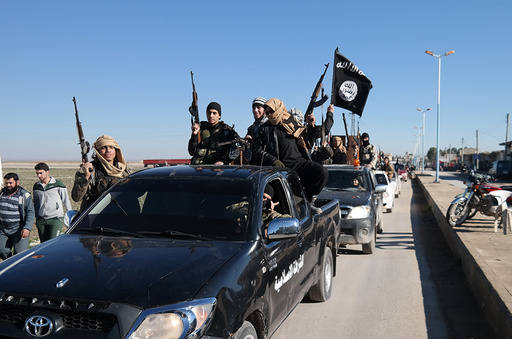The latest report presented to the U.N. Security Council highlights the escalating threat posed by Islamic State and al-Qaida extremists, particularly across specific regions in Africa. Both groups are intensifying their operations in Syria, which has been identified as a potential strategic base for external campaigns.
According to the report, the al-Qaida-aligned Jama’at Nasr al-Islam wal-Muslimin (JNIM) in West Africa, along with al-Shabab in East Africa, have successfully expanded their territorial influence. This shift towards African territories has been attributed, in part, to Islamic State’s setbacks in the Middle East, driven by heightened counterterrorism initiatives. Furthermore, concerns are mounting over foreign fighters potentially returning to Central Asia and Afghanistan, potentially destabilizing regional security.
Despite geographical shifts, the report underscores that Islamic State continues to pose a prominent threat to Europe and the Americas. Radical elements, often influenced through social media and encrypted communications, continue to be significant concerns. Specific focus is on the Afghanistan-based Khorasan group, which has been implicated in radicalizing individuals abroad.
In the United States, multiple alleged terrorist plots have been attributed to emotional responses to the Gaza-Israel conflict or individuals radicalized by the Islamic State. Highlighted incidents include a deadly vehicular attack in New Orleans reportedly driven by IS support, alongside a foiled ISIL-inspired plan targeting a military base in Michigan. The IS Khorasan group has issued warnings of further plots threatening American targets.
The Sahel region in Africa sees JNIM actively expanding operations. They are operating with relative autonomy, particularly in northern Mali and much of Burkina Faso. Meanwhile, Islamic State activities in the Greater Sahara are resurging, especially along the Niger-Nigeria border, where they intend to solidify their presence. JNIM has demonstrated the capability to launch complex operations involving drones and improvised explosive devices against secured military posts.
In East Africa, al-Shabab has demonstrated continued resilience, intensifying efforts in southern and central Somalia. Connections with Yemen’s Houthi rebels persist, with the exchange of weapons and personnel training being key components of their collaboration.
Syria remains in tumult following the deposition of President Bashar Assad, with Syria’s interim President Ahmad Al-Sharaa pledging reforms for inclusive governance. However, challenges and skepticism remain high as extremist threats from IS and al-Qaida intensify. Reports indicate a significant number of foreign fighters were involved in the operation that led to Damascus’ capture.
Concerns have also emerged over Syria’s military restructuring, which involves appointments of senior positions to individuals with obscure ideological affiliations, including some suspected of harboring extremist intentions.
Financial challenges for the Islamic State have been noted in the wake of HTS’s takeover in Syria, reflected by reduced fighter salaries and inconsistent payments, indicating financial instability. Meanwhile, financing strategies across both extremist organizations involve varied approaches, from local taxation, resource exploitation, kidnapping for ransom to business exploitation. The Islamic State’s adaptations include utilizing female couriers and cloud-based systems for money transfers to minimize detection risks, along with secure drop-offs managed via password-protected exchanges.


